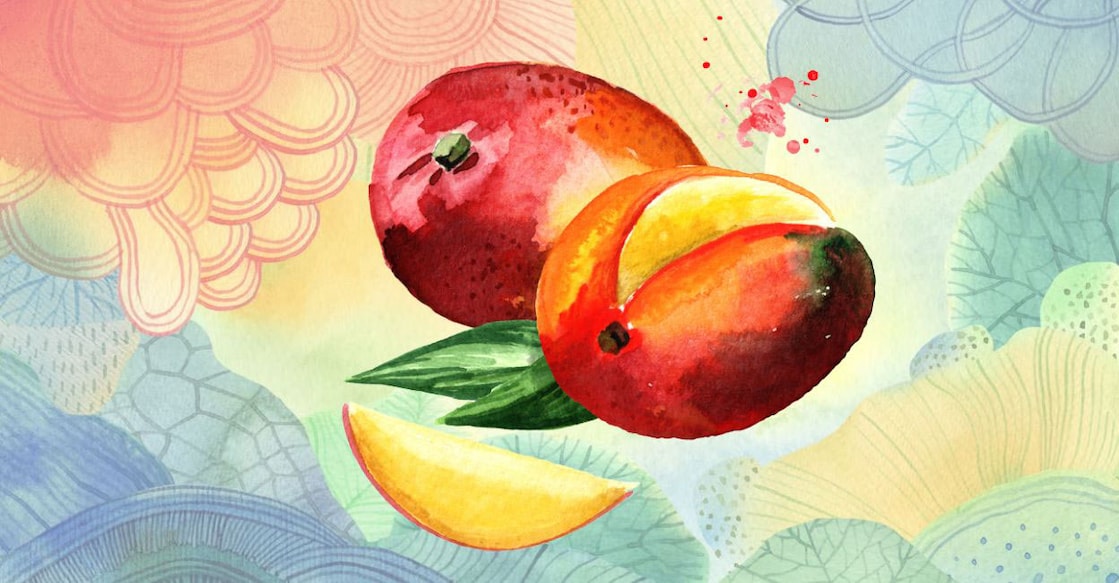The fruit of spring, the scent of desire: Mangoes in ancient Indian literature

Mail This Article
The mango, in its earliest life, belonged to language.
It appeared in verses where spring unfolded in the breath of blossoms. It stood in the fields of early thought - in the work of poets, physicians, and monks - not only as fruit, but as sign and scent, as presence.
Kalidasa placed it in the season of desire. In Buddhist stories, it stood beside questions of virtue. In medical texts, it was described leaf by leaf, seed by seed, with care. Sangam poets wove it into scenes of waiting and return, where its ripeness echoed human longing.
The mango was never just eaten. It was seen, sensed, and named; held up to light and meaning. In the ancient imagination, it offered shade and sweetness not only to the body, but to thought itself.
This is the story of the mango in a time when it was more than a commodity. A story that belongs to ancient verse, to the language of longing, and to the rituals of a world that read its fruits like scripture.

A fruit older than its flesh
The earliest references to the mango (Mangifera indica) appear in the Vedas, the foundational texts of Hindu philosophy dating back to at least 1500 BCE. Though the fruit is not named in the Rigveda, later texts like the Atharva Veda mention trees associated with prosperity, and mango is believed to be among them. The Puranas, a genre of ancient Sanskrit literature, make more direct references. In the Skanda Purana and Padma Purana, mango trees are described as celestial and auspicious, their leaves often used in rituals like weddings and housewarming ceremonies (known as toranams) even today.
Poetry and the season of longing
No ancient poet intertwined nature and emotion as intimately as Kalidasa. In Ritusamhāra, his lyrical celebration of the seasons, spring is not just a time of flowers. It is the season of stirred hearts, scented air, and quiet awakenings.
In Arthur W Ryder’s translation, spring arrives like a warrior of love:
“A stalwart soldier comes, the spring,
Who bears the bow of Love;
And on that bow, the lustrous string
Is made of bees, that move
With malice as they speed the shaft
Of blossoming mango-flower…”
The mango blossom, amba pushpa, becomes the poet’s symbol for longing. Love is not abstract. It is carried in scent, in the hum of bees around mango buds, in the slow unfolding of the air. The flower is the season’s first word, shot like an arrow from the bow of Kāma, the god of love.
In Raghuvamsha, Kalidasa again draws on mango groves to set the mood of tenderness and quiet joy. The fruit and its shade often appearing in scenes of love and leisure.
In his hands, the mango is not yet a fruit to be eaten. It is first a sign; of warmth, of desire, of what begins to bloom in the air before it ripens in the heart.
In the Tamil Sangam literature (circa 300 BCE to 300 CE), mangoes emerge in poems from the Akananuru and Kuruntokai, often as part of lush pastoral scenes. Here, lovers meet under mango trees, and the fruit stands as a symbol of maturity, fertility, and fleeting joy.
Mangoes in the Jataka tales
The Jataka tales, a Buddhist compilation of stories about the previous lives of the Buddha, include several parables centred on mango trees. One of the most popular is the Amba Jataka (Jataka No. 39), where a king, obsessed with a luscious mango fruit, cuts down the tree that bore it. The story ends with a moral about greed and gratitude - the tree’s generous shade and fruit taken for granted.
In another tale, the Maha-Mangala Jataka, a wise king plants mango groves for future generations, reflecting the fruit’s association with benevolence and long-term vision.
Ancient Ayurveda’s golden fruit
Classical Ayurvedic texts like the Charaka Samhita (circa 1st century BCE) and Sushruta Samhita extol the mango for its medicinal properties. According to these treatises, ripe mangoes balance the vata and pitta doshas, while raw mango is used to stimulate digestion. Mango bark, leaves, and even the seed kernel found uses in formulations for everything from diarrhea to dental hygiene.
Paisleys and sacred leaves
Even the shape of the mango infiltrated the visual vocabulary of ancient India. The paisley motif, which has origins in South India and Persia, is said to be inspired by the curve of a mango. Known locally as mankolam in Tamil or ambi in Punjabi, this mango-shaped pattern appears in ancient textiles, temple carvings, and Mughal-era art.
Mango leaves, strung in garlands, still hang at thresholds during festivals like Ugadi, Vishu, and Gudi Padwa, believed to absorb negative energy and attract prosperity. These customs are mentioned in texts like the Manasollasa (12th century CE), a Sanskrit encyclopaedia composed by King Someshvara III of the Chalukya dynasty.
A fruit that travelled
Mango did not remain a subcontinental secret. By the 7th century, Chinese monk Xuanzang wrote about mango groves he encountered during his travels in India. Persian and Arabic texts of the medieval period also mention amba, often linked to Indian trade routes. The fruit, or at least its fame, journeyed far before European colonizers tasted it.


